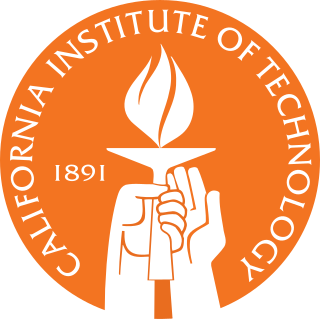
The California Institute of Technology (branded as Caltech) is a private research university in Pasadena, California. The university is responsible for many modern scientific advancements and is among a small group of institutes of technology in the United States which are strongly devoted to the instruction of pure and applied sciences. Due to its history of technological innovation, Caltech has been considered to be one of the world's most prestigious universities.

The University of California, Berkeley, is a public land-grant research university in Berkeley, California. It was established in 1868 and is the state's first land-grant university and the founding campus of the University of California system. Berkeley is one of the best universities in the world with the most top-ranked departments nationally and more companies founded by undergraduate alumni than any other university worldwide. The institution also has the second most Nobel Prize associations for any academic or research institution.

The Technion – Israel Institute of Technology is a public research university located in Haifa, Israel. Established in 1912 under the dominion of the Ottoman Empire, the Technion is the oldest university in the country. The Technion is ranked as one of the top universities in both Israel and the Middle East, and in the world's top 100 universities in the 2022 Academic Ranking of World Universities.

Dudley Robert Herschbach is an American chemist at Harvard University. He won the 1986 Nobel Prize in Chemistry jointly with Yuan T. Lee and John C. Polanyi "for their contributions concerning the dynamics of chemical elementary processes". Herschbach and Lee specifically worked with molecular beams, performing crossed molecular beam experiments that enabled a detailed molecular-level understanding of many elementary reaction processes. Herschbach is a member of the Board of Sponsors of the Bulletin of the Atomic Scientists.
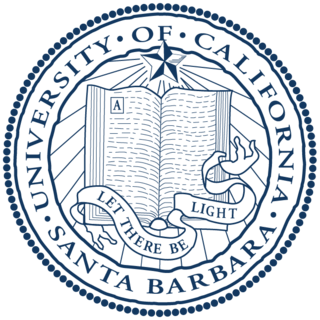
The University of California, Santa Barbara, is a public land-grant research university in Santa Barbara, California, United States. It is part of the University of California university system. Tracing its roots back to 1891 as an independent teachers' college, UCSB joined the ancestor of the California State University system in 1909 and then moved over to the University of California system in 1944. It is the third-oldest undergraduate campus in the system, after UC Berkeley and UCLA. Total student enrollment for 2022 was 23,460 undergraduate and 2,961 graduate students.
The Walter A. Haas School of Business, also known as Berkeley Haas, is the business school of the University of California, Berkeley, a public research university in Berkeley, California. It was the first business school at a public university in the United States.

The University of California, Berkeley College of Engineering, branded as Berkeley Engineering, is the engineering school of the University of California, Berkeley, a public research university in Berkeley, California.

The Mellon College of Science (MCS) is part of Carnegie Mellon University in Pittsburgh, Pennsylvania, US. The college is named for the Mellon family, founders of the Mellon Institute of Industrial Research, a predecessor of Carnegie Mellon University.
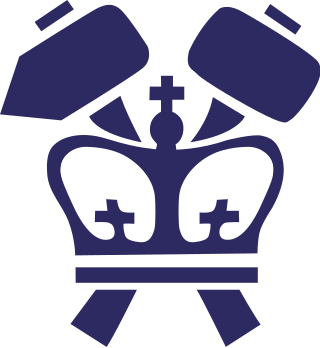
The Fu Foundation School of Engineering and Applied Science is the engineering and applied science school of Columbia University. It was founded as the School of Mines in 1863 and then the School of Mines, Engineering and Chemistry before becoming the School of Engineering and Applied Science. On October 1, 1997, the school was renamed in honor of Chinese businessman Z.Y. Fu, who had donated $26 million to the school.
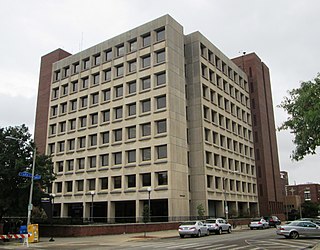
The College of Liberal Arts and Sciences (LAS) is the largest college of the University of Illinois Urbana-Champaign. The college was established in 1913 through the merger of the College of Literature and Arts and the College of Science. The college offers seventy undergraduate majors, as well as master's and Ph.D. programs. As of 2020, there are nearly 12,000 undergraduate students and 2,500 graduate students attending the College of Liberal Arts and Sciences.

Iran University of Science and Technology (IUST) (Persian: دانشگاه علم و صنعت ایران, Daneshgah-e 'elm vâ Sân'at-e Iran) is a research institution and university of engineering and science in Iran. The university is home to 15 faculties offering undergraduate and postgraduate degrees in a wide range of engineering-based subjects as well as maths, physics, and department of foreign languages. In 1995 IUST awarded Iran’s first PhDs in materials, metallurgical and traffic engineering. IUST is the only university in the Middle East which has a school of railway engineering and a school of progress engineering. It is also the only university in Iran which has a school of automotive engineering. There are also 12 research centres, nine centres of excellence and 19 specialised libraries as well as four satellite campuses in other parts of the country. IUST is located on Hengam Street in the Narmak neighborhood in northeast Tehran. IUST and its surrounding communities provide a cultural and recreational environment suited to the work of a major research institution.
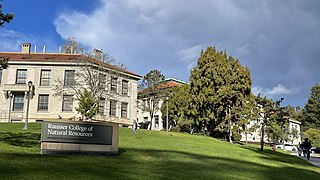
The Rausser College of Natural Resources (RCNR), or Rausser College, is the oldest college at the University of California, Berkeley and in the University of California system. Established in 1868 as the College of Agriculture under the federal Morrill Land-Grant Acts, CNR is the first state-run agricultural experiment station. The college is home to four internationally top-ranked academic departments: Agriculture and Resource Economics; Environmental Science, Policy, and Management; Nutritional Sciences and Toxicology; and Plant and Microbial Biology, and one interdisciplinary program, Energy and Resources Group. Since February 2020, it is named after former dean and distinguished professor emeritus Gordon Rausser after his landmark $50 million naming gift to the college.

Carolyn Ruth Bertozzi is an American chemist and Nobel laureate, known for her wide-ranging work spanning both chemistry and biology. She coined the term "bioorthogonal chemistry" for chemical reactions compatible with living systems. Her recent efforts include synthesis of chemical tools to study cell surface sugars called glycans and how they affect diseases such as cancer, inflammation, and viral infections like COVID-19. At Stanford University, she holds the Anne T. and Robert M. Bass Professorship in the School of Humanities and Sciences. Bertozzi is also an Investigator at the Howard Hughes Medical Institute (HHMI) and is the former director of the Molecular Foundry, a nanoscience research center at Lawrence Berkeley National Laboratory.

The College of Engineering (CoE) is one of the three undergraduate colleges at the University of California, Santa Barbara.

The College of Science at the University of Utah is an academic college of the University of Utah in Salt Lake City, Utah. The college offers undergraduate and graduate degrees in atmospheric science, biology, chemistry, geology and geophysics, mathematics, metallurgical engineering, mining engineering and physics and astronomy.
The Graduate School of Princeton University is the main graduate school of Princeton University. Founded in 1869, the school is responsible for all of Princeton's master's and doctoral degree programs in the humanities, social sciences, natural sciences, and engineering. The school offers Master of Arts (MA), Master of Science (MS), and Doctor of Philosophy (PhD) degrees in 42 disciplines. It also administers several pre-professional programs, including the Master in Finance (M.Fin.), Master of Science in engineering (M.S.E.), and Master of Engineering (M.Eng.), Master in Public Affairs (M.P.A.), Master in Public Policy (M.P.P.), and Master of Architecture (M.Arch.) degrees.















